A train that hasn’t moved for nearly 50 years could be about to make a dramatic return to the London Underground — the Q-Stock is returning.
The Q-Stock is a general name given to a rather motley set of train carriages, originally used on the District line from 1938 onwards, and made up of a collection of units built between 1923 and 1935. With delightful wooden interiors and curved exteriors they were design partners to the 1938 tube stock and represent the pinnacle of the age of glory for London Underground’s trains.
As they slowly wore out through use, most of them were scrapped in the 1960s and 70s, with the last one running on the East London line in the early 1970s.
Never again, as plastic and metal came to dominate the industry would such warmly decorated art-deco trains grace the rails.
But now, a team at the London Transport Museum are working to restore the last surviving set of four carriages back into working order, with the intention to run them once more on the Underground within the next few years.
The museum actually owns five carriages, but one is in the Covent Garden site, and is a static display, so the museum, and its volunteers are working on four units stored at their Acton depot.
Unsurprisingly, four very elderly train carriages that are nearly 100 years old each that spent 50 years carrying passengers, then most of their retirement in less than forgiving conditions are in a bit of a sorry state.
Of the four carriages, the best looking at the moment is Q35 (08063), which was built in 1936 and donated to the museum in 1997 by the London Underground Railway Society.
One of the issues that will determine if the train can return to operational service is adding in the extra signalling equipment to allow them to run on the live railway. This carriage is likely to be the only one of the four where the equipment can be fitted due to the lack of space in the other three units.
A decision about whether the signalling equipment can be modified to fit into the carriage is hoped for by early next year.
The carriage still needs a lot of work done though, to repair damaged caused by asbestos removal and the doors need a lot of work to bring them up to working order.
In fact the doors are part of what makes the trains the Q-Stock in the first place. When the carriages were first built in the 1920s, they were the last to have manually opening doors. When the carriages were later converted to guard operated doors, with air-powered hydraulics, that was what turned various G, K, L, M, and N stock trains into the collective Q-Stock.
The volunteers restoring the carriages have now got one of the doors working again, with their distinctive sound of air-pressure opening and closing them.
The oldest of the four carriages is Q23 (4184), dating from 1923, but after being removed from service in 1971 it spent some years as a static carriage, so most of the working parts are now missing.
Due to the work needed to bring that carriage into service, it’s going to be the last to be worked on.
The other two are the 4416/17 units, built in 1938, and withdrawn from passenger service in 1972. These are the two most art-deco of the four as they are a decade older than their more American inspired predecessors. They are also in the best condition in terms of motor engines, but that’s about all.
With their slightly flared exteriors, angled windows and richly decorated interiors, I suspect these will be the carriages everyone wants to sit in when the train starts running heritage tours in a few years time.
In the meantime, lots more work is needed. A batch of replacement art-deco style lamp shades have recently been delivered, but as the minimum order they could place for the bespoke design was considerably higher than the number they need for the restoration, expect the surplus to be offered for sale to raise funds for the restoration.
If you fancy a set of replica 1938 tube carriage lamp shades for your living room, keep an eye out if they are put up for sale.
The light shades are today decorative, but originally they were a safety feature. The lighting, and indeed most of the electrics inside the carriages ran on the same 600 volts that powered the motors, so letting passengers fiddle with the lamps could have been fatal.
For the restoration, modern safety standards don’t allow that sort of thing, so the wiring is being replaced with 50 volts, which is both safer for humans and less likely to incinerate the wooden interiors of the carriages.
A lot of the work being done is to try and restore as much of the original works as possible, often by salvaging parts from other scrapped carriages. The recently discontinued District line trains are proving a surprising source of components that are reasonably suitable to be retrofitted to their predecessor carriages.
Elsewhere parts might be found from suppliers that still exist and might be able to manufacture replacements.
At the moment, the volunteers are working on preparing the carriages to bring them up to museum grade, for display as static units, but with working doors and lighting. They aim to have that done in time for the District line’s 150th anniversary, which is next December.
If the signalling equipment issue is solved, then full speed ahead to get them up and working for use on the London Underground once more.
In just a few short years, there could be a 100 year old red art-deco sub-surface train delighting passengers and amazing bystanders on the Underground.
And wont that be an amazing thing to see?
To read more about the Q-Stock restoration project, and donate to it, go here.

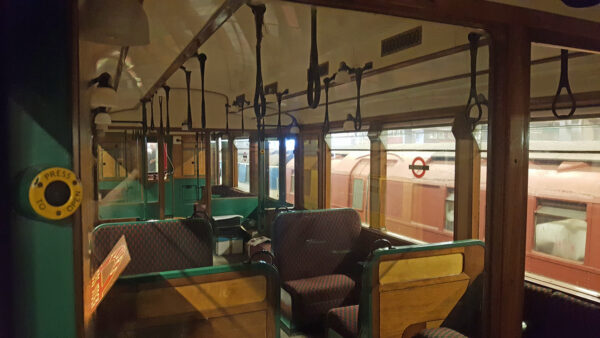
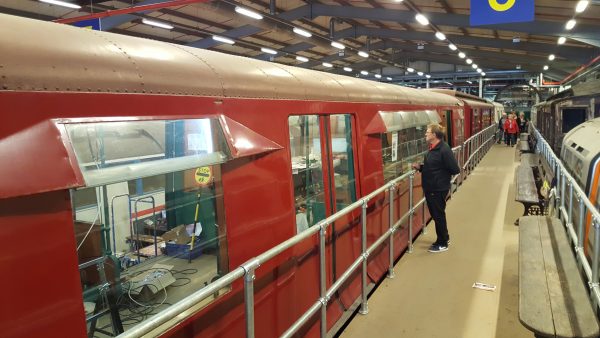
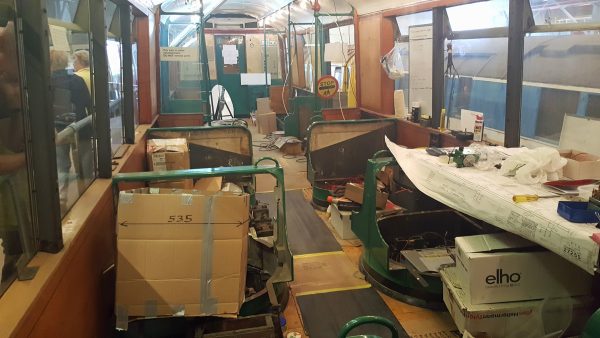
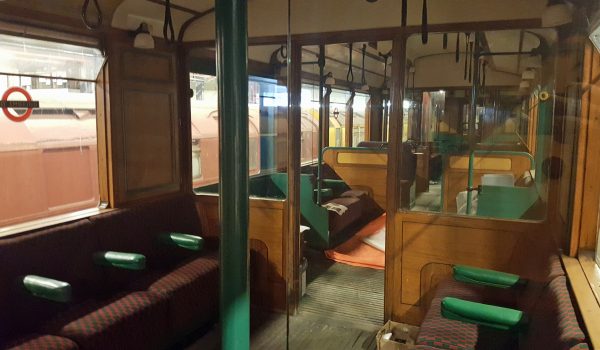
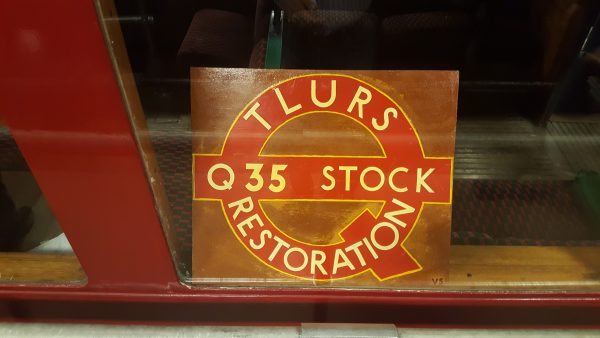
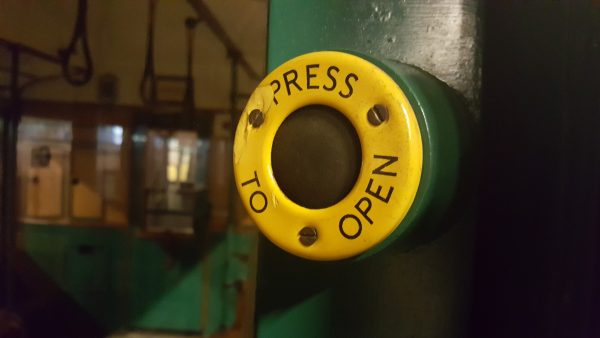
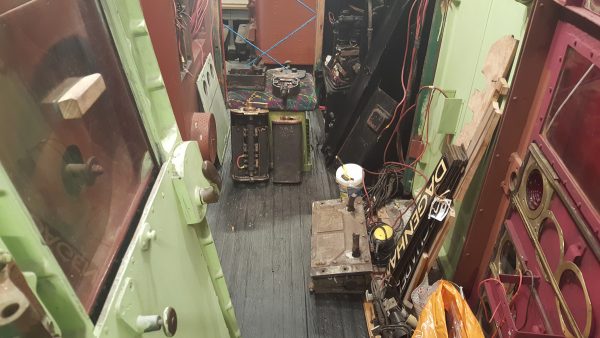
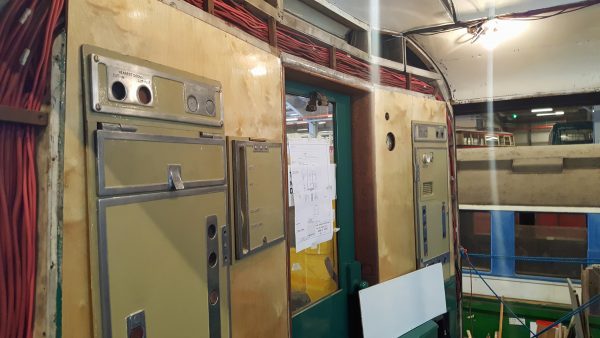

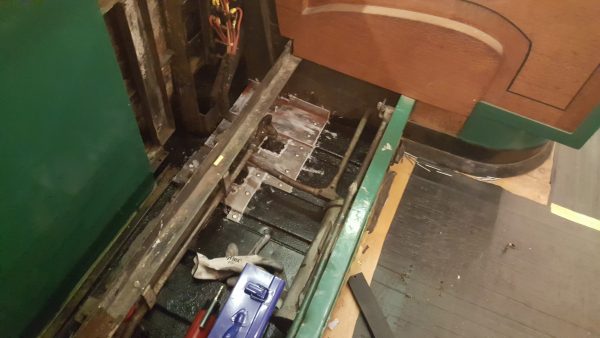
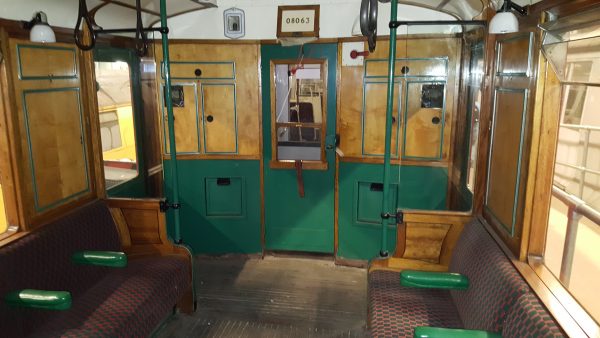






All very commendable, but I expect ticket prices for any special runnings in future will be unaffordable for most enthusiasts.
No, not our style!!!
A London Transport train.
Team member. Get involved.
There are still a few of us around who drove these in passenger service on the District line.
Richard. Why not get in contact with us and tell us your story? ‘Horseboxes, etc!
They look absolutely gorgeous
MORE COMFORTABLE than current stock, too!
Actual cushions with some depth, rather than padded baords …
..as with modern commuter and inter-city trains. Clearly designed to make occupants as uncomfortable and unwelcome as possible !
Please do keep an eye out for us and do contact if you want to know more or would like to help!
We are a friendly bunch, looking for good souls out there who love the idea of what this train could be. A friendly, gender natural!!! bunch, with an incredible skills base, but always looking for a helping hand. Also its FUN!!! Great fun!
Or even neutral!!!
Ie 21 C attitudes
Absolutely fascinating. I do look forward to potentially seeing the return of these charming cars.
The armrests separating each individual’s sofa area make the seating experience a little too restrictive for my tastes and so I doubt I shall prefer Q-stock to my current favourite carriages, being those of the Bakerlook line however the wood panels are as you say delightful and I do hope that they make an appearance on the tracks in the not-too-distant future.
Q35 is a comfy joy!
Do you mean the seats where you are launched into the air if the person on the next-door seat sits down too heavily?….
I wondered why the original lighting was powered at the full line voltage of 600 volts? Surely having such a high voltage within a close distance to passengers would be hazardous? People might not have appreciated the risks from 600 volt lighting circuits at that time.
Like BR trains which also used ordinary looking bulbs, a different voltage was used to stop people nicking them for home use!
Travelled on the Circle Line between Liverpool St to St James’s Park when I started by first full time job after leaving school back in 1967. Think same rolling stock?
We lived in different times Kai!!!!
Only from about 1935 did Underground trains feature sedate 50V control and lighting circuits. We are v wisely making our baby a wee more sedate, but just as authentic for passengers. Will have that lovely warm tungsten bulb effect. Nice for a snooze in the evening going home on the train. Superb!
Chris J
You will have travelled on a type called CO/CP stock. Externally identical to our two Q38 cars, the twins 4416/7. But ours were not as modern as 50V on CO/CP! Never ran on Circle, as gong around and around, meant driver did not change ends, so did not change batteries So. ..batteries for various would not recharge!!! You had to change ends, shut up cab and open up other end to allow charging. A strange little quirky fact! Love our train.
I’m surprised wooden carriages would be allowed underground. Wouldn’t that be a fire hazard?
The carriages themselves are not made out of wood, only the interior fittings. The likelihood of them being a fire hazard, with modern safety and maintenance regulations are near to zero. Feeling better now ?
Hi Ian / Niall,
This is wonderful news! But just out of interest what are the signalling issues that apply to the carriages?
Al
In 1971 signalling was under the control of signalmen (always men then) in boxes and a few automatic machines. Now it is an entirely different computerised system requiring electronic kit on the trains to interact with that on the track. The passenger still sees red, yellow and green lights. But the actual system has changed.
Whilst a student at the East London FE College I travelled on Q23, Q27 and Q31 and Q35 stock on the East London Line between New Cross Gate and Whitechapel from 1966 to 1968.
I think that the trains need fitting out with Seltrac or a similar system to be able to safely run in passenger use on the modern Undergroud, as a resignalling scheme is in place to fit the subsurface lines with Seltrac or similar Transmission Based Train Control signalling.
I was 11 when the Q stock was withdrawn so do not recall ever travelling on them.
But I very much remember the red CO/CP stocks and (by then silver) R stock trains which lasted in the very early 1980’s.
One memory I have is catching one of the red trains in the rush hour when it was working on the Hammersmith – Barking service. The lights dimmed as the train departed from stations. There was a Metropolitan Line route map in these trains which also showed the Circle Line. It would be wonderful if this map reappeared in the Q stock train.
The car that was donated by the LURS was a first / third composite. This explains the internal doorways. It would be wonderful if this aspect was recreated. Alas I do not know what type of signage was used to signify which portion was 1st class non-smoking, 1st class smoking and 3rd class (either smoking or non-smoking… again I am unsure which).
The CO driving motors had high-backed transverse seats.
I managed to amass a small a collection of photos before the CO, CP and R stock trains were finally retired. I tried to record sound too but alas my cassette recorder let me down.
Simon
The nay-sayers need a wake-up call, living in a country with such a proud respect for heritage. In 1949 going to school from Kenton to High Holborn, I travelled the Bakerloo Line into the city, often choosing alternative routes to include the Inner Circle Line and the Q type trains.
Great photos. Continue this important work!
Rodney, Vancouver Island.
Thanks for all your words of encouragement and happy memories.
A tough challege, but we like that!
Re wood on the cars.. .
All cars post 1903 serious fire on.Metro were fitted with fire resistant finishes and after 1WW were constructed in metal. After the Fennell Report and King” S X fire all our work has to be fully compliant with the excellent safe standards of LUL. Everything we do has to be to the highest standard. Safety First. Luckly smoking is banned
PS Signalling…some top people on the case.
Fantastic project, very encouraging. Museum trains run services in other countries.
It would be a brilliant addition for London to see a Tourist visitor weekend shuttle. Convert the far Barbican platform 4 into a display exhibition for the Museum of London combined with a w/e ticket to Covent Garden LT Museum. Carriage plans for Barbican (Centre-CharterHouse), Tower Hill, Monument, Mansion House (Bankside-Globe-St Pauls), Embankment (Galleries), Westminster (Abbey-Eye), South Kensington (Museums), LT Museum Depot Acton Town open days.
If nothing to visit at Acton then reverse at Olympia (for photo Ops) back to Barbican.
I was a passenger on the last Q-stock train in public service back in 1971. It would be a great privilege to be able to also ride on its next trip even if that is still a few years away.
I was a very small passenger with my grandma, often. The leftmost platform at Gloucester Road, lovely red trains with flared skirts.
I vividly remember the flared-sided CO/CP and R-stocks on the District all during the 1970s. Beautiful trains, and so comfortable.
Some of the R-stock carriages were actually converted from 1930s CO/CP’s and repainted from red to white to couple with the newer, unpainted aluminium R-stock trains.
I believe the CO/CP light bulbs were reverse-threaded so that people couldn’t, erm, unscrew them & “borrow” them for home use (I could be wrong!). Cannot wait to ride this type of train again!
definitely more comfortable then the S7 and S8 stocks
Fantastic memories of the co/cp stock which I commuted to work from ladbroke Grove to great portland st when I left school in 1968 and some years before that when I was about 10 years old visiting my nan who lived at Bow, so we had to change trains at aldgate east and often rode on the very old Q stock with the clerestory roof which to me looked so much older with there round lamp shades but we’re a joy to ride in, would love to ride in one now or the co/cp and not forgetting the silver R stock, that high pitched whine they let out whilst on the platform, the loud two tone tick over of the red co/cp stock, so many memories of these great icons of yesteryears